Recently, live rock has begun to be exported from The Republic of Ghana, in West Africa to various countries around the world apparently due to a competitive pricing structure compared to existing sources. Along with these shipments of live rock, a few shipments of fishes endemic to this region were also sent. Although the tropical Eastern Atlantic does not have the fabulous coral reefs of the Pacific or Caribbean, there are a number of fish from this region that are of interest to some advanced aquarists due to their relative rarity in the trade. Some of these fish are bound to become more popular with other home aquarists as their availability increases and their retail price subsequently decreases.
While it is not always possible (or even prudent) to characterize all fish available from a given region as being “good” or “bad” quality, certain assumptions regarding the relative condition of fish from different regions does seem evident (Hemdal 2006). Without doubt there are differences in quality between specific exporters from a single region, but can there be an overall “trend” in quality for a given region? Fish from Jakarta and Manila tend to arrive in United States a bit thin, and have higher than expected mortality rates, probably due to the collection techniques employed, such as sodium cyanide. Caribbean fish arriving from Haiti often seem weaker than the same species of fish collected in the Florida Keys. So far, it seems that the fish arriving in the U.S. from Ghana are in relatively good condition, and seem to be very hardy. This may be due in part to collection practices employed, but it may also be that fish from this region are simply sturdier than those from
some other areas, perhaps due to their environment which is marginal at best, and certainly not as pristine as oceanic reefs where many other aquarium fishes are collected. In an attempt to quantify this, a series of 20 fish from Ghana that were sent to a public aquarium in multiple shipments showed zero mortality for any unknown or disease-related reasons. The only mortalities seen in these fish after 40 days were two wrasses (Coris atlanticus) that were lost due to underestimating their ability to leap out of their holding tank and one cardinalfish that was lost due to interspecific aggression. This amounted to an overall mortality rate of 15%. This can be compared to mortality rates seen in typical tropical marine aquarium fishes imported from other regions that range from 12 to 60% over the same time frame (Hemdal 2006).
Despite the relatively unsophisticated techniques employed by the collectors and exporters in this region, the fish arrive at their faraway destinations in very good condition. Part of this is probably due to the sturdiness of the animals themselves – fish that live in marginal reef areas need to be hardy in order just to survive – but the rest of the equation is probably due to the use of nets to collect these fish as opposed to resorting to the use of he chemicals (such as sodium cyanide) that is still in widespread use in some other collecting areas. As an example, one African angelfish, (Holacanthus africanus) was imported and then re-shipped by a dealer and then was acclimated to a quarantine system. This fish was needed immediately as a “photo-model” for this article, so it was photographed in that system within two hours of its arrival. Most recently shipped fish require a long period of acclimation before they begin behaving normally. Not this angelfish – while
being photographed, it demonstrated the normal angelfish behavior when approached by a camera of moving away, and then turning broadside at the last moment. Unexpectedly, it would then swim back towards the camera and try to bite at the lens! This tiny, recently shipped angelfish showed more chutzpah than a similar angelfish that had been adapted to captivity for many years.
Aquarists working with fish from this region are quickly struck with how similar some species from West Africa are to those from other regions, such as the tropical Western Atlantic and the Mediterranean. The origins of many of the species from this region can be surmised based on the presence of similar “parent species” in adjoining bodies of water. All fish from the region can be categorized into one of the following categories:
- Endemic
- A species unique to the region. Examples of endemic West African fishes include the African angelfish, Holacanthus africanus, an unidentified Serranus sp. and the goldenheart triggerfish, Balistes punctatus. Many of these endemic fishes have doppelgangers, or close relatives, that they obviously evolved from.
- From the Mediterranean
- A species of fish originally found in the Mediterranean Sea, and having migrated to this region. Examples include the Swallowtail seaperch, Anthias anthias and one of the cardinalfish in the area, Apogon imberbis.
- From the tropical Western Atlantic
- These migrants from the Caribbean region are rarely shipped from Ghana, as they are less expensive to acquire from other regions. Species include the Spotfin (Cuban) hogfish, Bodianus pulchellus and the Creole fish, Paranthias furcifer.
- From the Indo-Pacific region
- Because the cold waters surrounding Cape Hope in South Africa block the movement of tropical fish from the Indian Ocean to the Atlantic, few fish from the region are also found in the Pacific. Most of the species capable of doing this are large, fast swimming pelagic species that can make the journey during the warm summer months. One exception is the only species of butterflyfish found in both the Atlantic and the Indian oceans, Chaetodon marleyi (Debelius 1997).
- Wide-ranging Atlantic
- Some species in the region are found throughout the Atlantic Ocean basin in both tropical and subtropical waters. The best example of this is the Doctorfish, Acanthurus chirurgus.
- Circumtropical
- Fish that are found throughout the tropical regions of the world such as the Black durgon, Melichthys niger, and the Scrawled filefish, Aluterus scriptus. These species usually have an extended larval period that allows the larva to drift in ocean currents for long distances before settling out as juvenile fish.
- Unknown
- The only relatives of the endemic Biafra sawtail surgeonfish, Prionurus biafraensis, are found in the East Pacific (Mexico south to Chile and the Galapagos Islands) and around Indonesia, (FishBase 2008) so this species does not have a distribution contiguous with any similar species, therefore its presence here is from an unknown parent population.
- Waif
- Since the mechanisms that allowed species to spread in the first place (such as ocean currents) are still at work today, it is not impossible that “waifs” will be seen from time to time, where single fish from another region are discovered. These are non-breeding populations (for the most part) and can easily go undetected. By far the most common mechanism enhancing the spread of species to new regions are human beings (as evidenced by hundreds of examples, including lionfish (Pterois volitans) in the tropical Western Atlantic).
Species accounts
African Angelfish
- Range: Tropical Eastern Atlantic, Cape Verde to Angola – including the Canary Islands
- Maximum size: 17.6″ (45 cm) – much less in captivity
- Minimum aquarium size: 40 gal. (150 l) for juveniles, 250 gal. (946 l) for adults
- Feeding: Small food items of many types, omnivorous. Mysids would be a good starter food.
- Compatibility: Not reef safe, but peaceful with other species of fish about the same size. Should not be kept with other angelfish
- Similar species: Queen and Blue angelfish, Holacanthus sp. from the Tropical Western Atlantic
- Husbandry: This species is most attractive as a tiny juvenile, with much more blue than is shown in this 2 ½” (6.4 cm) juvenile. The coloration of adults is even more muted, but still retain some classic elegance, and some people find them attractive simply due to their rarity in the trade.
Blackbar Hogfish
- Range: Tropical Eastern Atlantic, Cape Verde to Angola – including the Canary Islands
- Maximum size: 19.7″ (50 cm) – much less in captivity
- Minimum aquarium size: 40 gal. (150 l) for juveniles, 250 gal. (946 l) for adults
- Feeding: Accepts a wide variety of meaty seafoods; krill, mysids, gelatin diet
- Compatibility: Not reef safe, but peaceful with other fish about the same size.
- Similar species: Bodianus axillaris from the Indo-Pacific
- Husbandry: This species is most attractive as either a juvenile or a large adult – the intermediate size pictured here has more muted coloration.
Cardinalfish
- Range: Temperate Eastern Atlantic and Mediterranean Sea
- Maximum size: 5.9″ (15 cm), 3.2″ (8 cm) in captivity
- Minimum aquarium size: 25 gal. (95 l) for juveniles, 200 gal. (757 l) for adults
- Feeding: Accepts a wide variety of smaller meaty seafoods; chopped krill or shrimp, mysids, brine shrimp
- Compatibility: Generally peaceful, but can become territorial towards other cardinalfish, to the point of killing one another. Odd, because this fish is often seen swimming in groups in the wild. Not reef safe due to their low temperature requirements.
- Similar species: Similar in coloration to a multitude of red cardinalfish.
- Husbandry: Prefers cooler temperatures below 70 degrees Fahrenheit (21 degrees Centigrade). May be shy and reclusive at first. Due to their deeper water habitat, these cardinalfish are many times more expensive than similar species from shallower water. Males are oral egg brooders.
Damselfish
- Range: Temperate Eastern Atlantic and Mediterranean Sea
- Maximum size: 9.8″ (25 cm) – about 5″ (12.7 cm) in captivity
- Minimum aquarium size: 50 gal. (189 l) for juveniles, 200 gal. (757 l) for adults
- Feeding: Accepts a wide variety of smaller meaty seafoods; chopped krill, mysids, gelatin diet, flakes
- Compatibility: Generally peaceful, but can become territorial during part of the year
- Similar species: Similar in coloration to the brown chromis, Chromis multilineatus, but stouter bodied, and lacking the light spot at the base of its tail.
- Husbandry: Prefers cooler temperatures below 70 degrees F (21 degrees C.). Adults are very plain colored, juveniles have more blue color in their fins.
Goldenheart Triggerfish
- Range: Eastern Atlantic, including the Canary Islands
- Maximum size: 23.6″ (60 cm)
- Minimum aquarium size: 40 gal. (150 l) for juveniles, 300 gal. (1135 l) for adults
- Feeding: Accepts a wide variety of meaty seafoods; clam meat, shrimp, krill, mysids, gelatin diet
- Compatibility: Not reef safe, will eat many small invertebrates. May become quarrelsome with other fish as it matures.
- Similar species: Queen triggerfish, Balistes vetula from the Tropical West Atlantic
- Husbandry: One of the most popular fish from the region, this fish certainly resembles its relative, the queen trigger, but both fish are found in the same areas of the Eastern Atlantic, so this species does not seem related enough to interbreed. Some aquarists have reported that this is a very peaceful species, but caution is still urged due to the notoriety of the triggerfish family in general.
Parrotfish
- Range: Tropical Eastern Atlantic, full extent of range unknown
- Maximum size: Unknown, but probably 20″ (51 cm), smaller in captivity
- Minimum aquarium size: 40 gal. (151 l) for small juveniles, 500 gal. (1893 l) for adults
- Feeding: Although primarily a herbivore, will accept a wide variety of food in captivity; Nori, krill, mysids, brine shrimp, gelatin diet
- Compatibility: Not considered reef safe due to its habit of feeding on algae at the base of corals, which may be nipped at in the process.
- Similar species: Many parrotfish from the Tropical West Atlantic have a three striped juvenile phase. None though, have two stripes and a gold base color as this species does.
- Husbandry: This species was extremely shy at first, but when some more boisterous fish were added to its quarantine tank, it suddenly became brazen, and would swim with them rather than hiding (One of these fish, an Oplegnathus fasciatus from Japan can be seen in the background of the accompanying image.
Peppermint Basslet
- Range: Tropical Eastern Atlantic, full extent of range unknown
- Maximum size: Unknown, but probably 4″ (10.2 cm)
- Minimum aquarium size: 20 gal. (75.7 l) for juveniles, 100 gal. (378.5 l) for adults
- Feeding: Accepts a wide variety of meaty seafoods; krill, mysids, gelatin diet
- Compatibility: Reef safe except with small shrimp, peaceful with other fish about the same size.
- Similar species: Lantern bass, Serranus baldwini from the Tropical West Atlantic
- Husbandry: This species is in the process of being formally described. Very hardy, but one specimen bit at some food items with such gusto that it dislocated some bones in its jaw. This injury healed on its own after a few months. This hyperextension of the maxillary bones has also been seen in some angelfish (Hemdal 2006).
Rainbow wrasse
- Range: Tropical Eastern Atlantic
- Maximum size: At least 8″ (20 cm)
- Minimum aquarium size: 50 gal. (189 l) for juveniles, 200 gal. (757 l) for adults
- Feeding: Accepts a wide variety of meaty seafoods; krill, mysids, gelatin diet
- Compatibility: Generally peaceful, but will eat small invertebrates
- Similar species: A sister species to Coris julis from the Mediterranean, some people believe they are actually just regional color variations of the same species.
- Husbandry: This species is well-known to be capable of jumping out of any uncovered aquarium. As juveniles, they are found in shoals (schools) and even adult males will tolerate each other in the same aquarium.
Swallowtail Seaperch
- Range: Mediterranean, Eastern Atlantic (in deeper water in tropical areas)
- Maximum size: to at least 10.6″ (27 cm)
- Minimum aquarium size: 50 gal. (189 l) for juveniles, 250 gal. (946 l) for adults
- Feeding: Multiple daily feedings of krill and mysids, with brine shrimp as a back-up
- Compatibility: Generally peaceful, but males may quarrel with one another and larger specimens may eat small shrimp
- Similar species: None really, no other Anthias has such enlarged pelvic fins and the elongated lower lobe of the caudal fin.
- Husbandry: Prefers dim lighting and cooler temperatures down to 58 F. (14.4 C.) Probably should not be kept at temperatures higher than 68 F. (20 C.) Juveniles and females are much less colorful, and even the males (pictured) are less colorful unless illuminated by a camera flash. Difficult to collect due to its deeper water habitat, this fish is destined to remain rare and very expensive in the aquarium trade.
West African Damselfish
- Range: Senegal to Angola, as well as the Canary Islands
- Maximum size: 3.9″ (10 cm)
- Minimum aquarium size: 25 gal. (94.6 l) for juveniles, 50 gal. (189.3 l) for adults
- Feeding: Multiple daily feedings of krill and mysids, brine shrimp as a back-up
- Compatibility: Although individuals seem more shy than other members of this genus from the Western Atlantic, expect any two fish of the same genus to fight, and adults may become territorial with other species of fish.
- Similar species: The Cocoa damselfish, Stegastes variabilis from the Western Atlantic is almost identical in coloration and habit. Both species turn a gray or brownish color as adults.
- Husbandry: Also called the Ocellate damselfish (Debelius 1997). Due to the pugnacious attitude and muted adult colors of this species, it is not likely to become popular with home aquarists. It does however, show a very good example of divergent evolution, where the parent species, the cocoa damsel can be identified visually, as opposed to requiring DNA testing.
Invertebrates from this region are less commonly seen in the pet trade, but there are some colorful beadlet anemones (Actinia equina) available from time to time, as well as a very nice red reef lobster (probably Enoplometopus antillensis) (Russo 2008). With the proper CITES II permits, some Montastrea cavernosa coral has also been exported. Live rock exported from this region is from inshore areas and aside from purple coralline algae on some pieces, is fairly generic in its composition.
| Available | Common Name | Scientific Name |
|---|---|---|
| ? | Night sergeant | Abudefduf taurus |
| ++ | Monrovia doctorfish”Atlantic Achilles Tang” | Acanthurus monroviae |
| + | Swallowtail seaperch | Anthias anthias |
| + | Cardinalfish | Apogon imberbis |
| +++ | Bluespotted triggerfishGoldenheart Triggerfish | Balistes punctatus |
| +++ | Blackbar hogfishBlueberry hogfish | Bodianus speciosus |
| + | West African sharpnose-puffer | Canthigaster supramacula |
| ? | Niger hind | Cephalopholis nigri |
| + | African hind | Cephalopholis taeniops |
| + | Parrotfish | Cetoscarus sp. |
| ++ | Four-banded butterflyfishHoefler’s butterflyfish | Chaetodon hoefleri |
| ? | Cadenat’s chromis | Chromis cadenati |
| ? | Damselfish | Chromis chromis |
| ? | Azores chromis | Chromis limbata |
| + | West African hawkfish | Cirrhitus atlanticus |
| ++ | Rainbow wrasse | Coris atlantica |
| + | Rock hindRock grouper | Epinephelus adscensionis |
| ++ | Guinean angelfish African Angelfish | Holacanthus africanus |
| ? | Guinean damselfish | Microspathodon frontatus |
| + | Honeycomb moray Atlantic dragon moray | Muraena melanotis |
| ? | Biafra doctorfish | Prionurus biafraensis |
| ++ | Marcella butterflyfish | Prognathodes marcellae |
| +++ | Ghanaian comber Peppermint basslet | Serranus sp. |
| + | Cape Verde gregory West African damselfish | Stegastes imbricatus |
| + | Striped panray | Zanobatus schoenleinii |
References
- Debelius, H. 1997. Mediterranean and Atlantic Fish Guide. 305pp. IKAN, Frankfurt, Germany
- Froese, R. and D. Pauly. Editors. 2008. FishBase.World Wide Web electronic publication. www.fishbase.org
- Hemdal, 2006. Advanced Marine Aquarium Techniques. 352pp. TFH publications, neptune City, New Jersey
- Russo, Joe. 2008. Personal Communications.
- Wirtz, P. et-al 2007. Coastal Fishes of Sao Tome and Principe islands, Gulf of Guinea (Eastern Atlantic Ocean) – an update. Zootaxa 1523: 1-48
- Wirtz, P. et-al 2008. The coastal fishes of Madeira Island – new records and an annotated check-list. Zootaxa 1715: 1-26


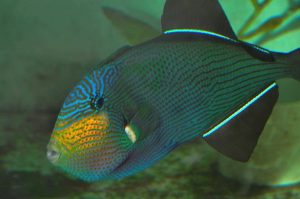

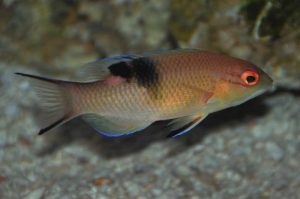

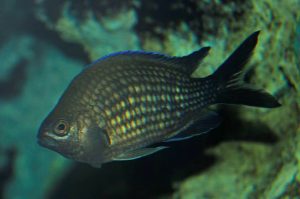
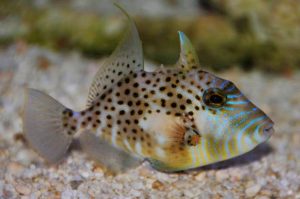
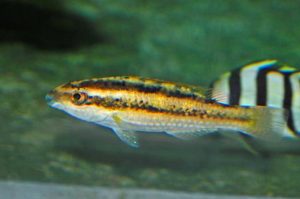

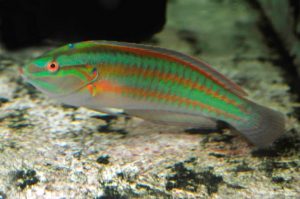

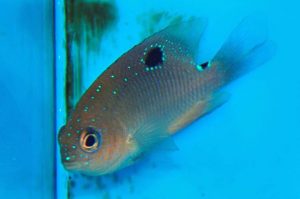

0 Comments